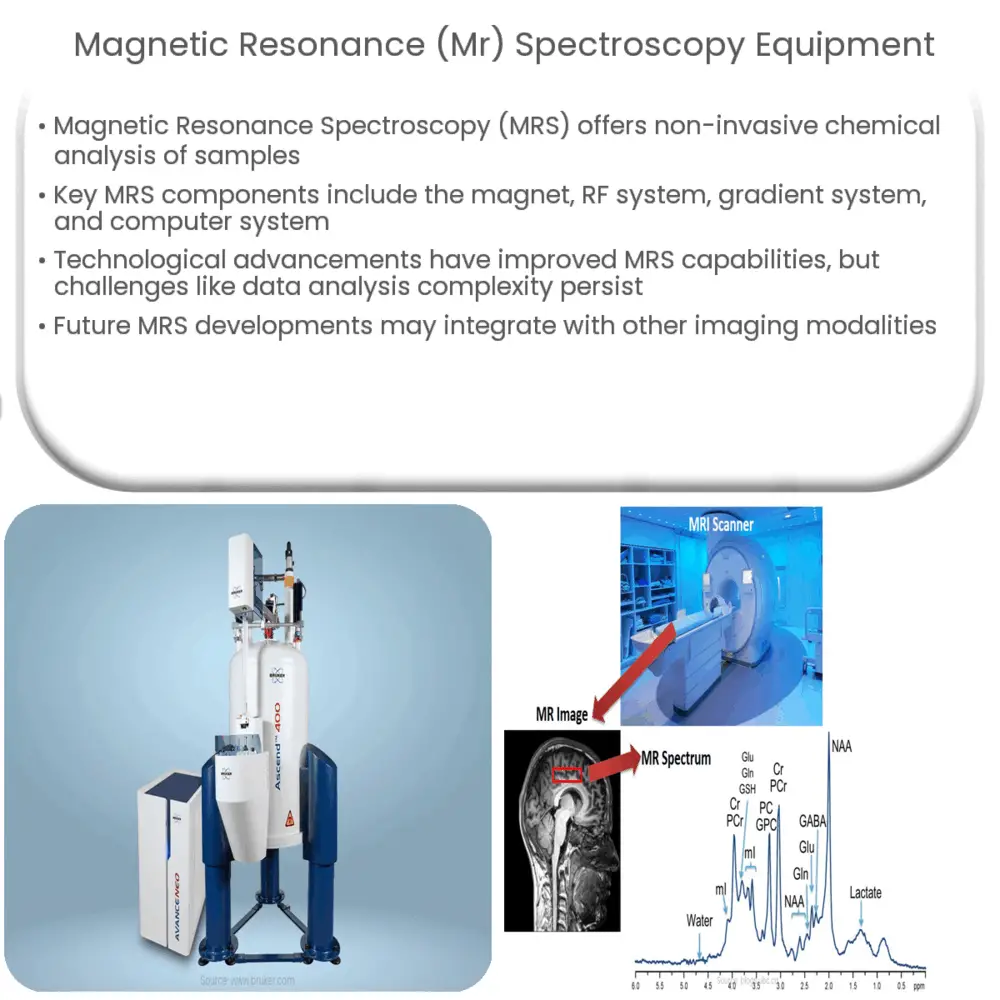Explore the intricacies of Magnetic Resonance Spectroscopy (MRS) equipment, its components, advancements, and the future of MRS technology.

Understanding Magnetic Resonance (MR) Spectroscopy Equipment
Magnetic Resonance Spectroscopy (MRS) is a non-invasive, powerful analytical technique used in the medical field and various scientific disciplines. It provides detailed information about the chemical makeup of a sample, offering insights into its molecular structure and composition. This article will delve into the heart of MRS, focusing on the sophisticated equipment that enables this advanced technology.
The Basic Components of MRS Equipment
The main components of MRS equipment are the magnet, the radiofrequency (RF) system, the gradient system, and the computer system. Each plays a crucial role in ensuring the accuracy and precision of the MR spectra generated.
- The Magnet: The magnet is the core of the MRS system. It creates a strong and stable magnetic field required for the alignment of atomic nuclei. The strength of this magnetic field, measured in Tesla (T), significantly influences the resolution and sensitivity of the MRS data.
- The RF System: This component includes the RF transmitter and receiver. The RF transmitter produces radio waves that perturb the alignment of the atomic nuclei. Once the RF signal is switched off, the nuclei return to their original state, emitting signals that are picked up by the RF receiver.
- The Gradient System: The gradient system consists of three sets of coil pairs, each pair responsible for creating a magnetic field gradient in a particular direction (x, y, or z). These gradients are crucial for spatial encoding of the MR signals, allowing the data to be localized within the sample or patient.
- The Computer System: This system processes the raw data received from the RF receiver, converting it into a format that can be interpreted by scientists or clinicians. Advanced software enables the analysis and visualization of the MR spectra, helping identify various metabolites in the sample.
Types of MRS Equipment
The primary categorization of MRS equipment is based on the strength of the magnetic field. The systems are classified into three main categories: low-field (<1T), mid-field (1-3T), and high-field (>3T) systems. The selection of the system depends on the specific requirements of the research or clinical application.
High-field systems are often favored in research environments due to their superior spectral resolution and signal-to-noise ratio. However, they also require more stringent safety protocols and a more sophisticated infrastructure. On the other hand, low- and mid-field systems are more commonly found in clinical settings, balancing cost, safety, and performance.
Advancements in MRS Equipment
Technological advancements have dramatically improved the capabilities of MRS equipment over the years. The development of ultra-high-field systems (>7T) has pushed the boundaries of spectral resolution and sensitivity, offering unprecedented insights into molecular structures and dynamics. Moreover, innovations in coil design and RF technology have improved the homogeneity and efficiency of the RF field, enabling more accurate and reliable MRS data.
Challenges and Future Directions
Despite the significant advancements in MRS technology, there remain challenges to overcome. One major issue is the complex and time-consuming data analysis process, often requiring expertise in spectroscopy and biochemistry. The development of automated and AI-driven data analysis tools is an active area of research, promising to make MRS more accessible to clinicians and researchers.
Another challenge is the susceptibility of MRS to various artifacts, including motion artifacts, magnetic field inhomogeneities, and RF interference. Advanced techniques like motion correction, shimming, and RF shielding are continually being developed to mitigate these issues.
Future developments in MRS equipment are likely to focus on increasing the sensitivity and resolution of the system while also improving its robustness and user-friendliness. The integration of MRS with other imaging modalities, like PET and CT, is another exciting direction, enabling multimodal imaging that provides complementary information about the sample or patient.
Conclusion
In conclusion, Magnetic Resonance Spectroscopy (MRS) equipment is a powerful tool that enables non-invasive analysis of the chemical makeup of a sample, providing invaluable insights in various scientific and medical fields. The key components of the MRS system, including the magnet, RF system, gradient system, and computer system, work in harmony to generate accurate and precise MR spectra. While significant advancements have been made in MRS technology, challenges remain, providing exciting opportunities for future research and innovation. As we continue to push the boundaries of MRS, we can expect this technology to play an increasingly important role in our quest to understand the complex world at the molecular level.


